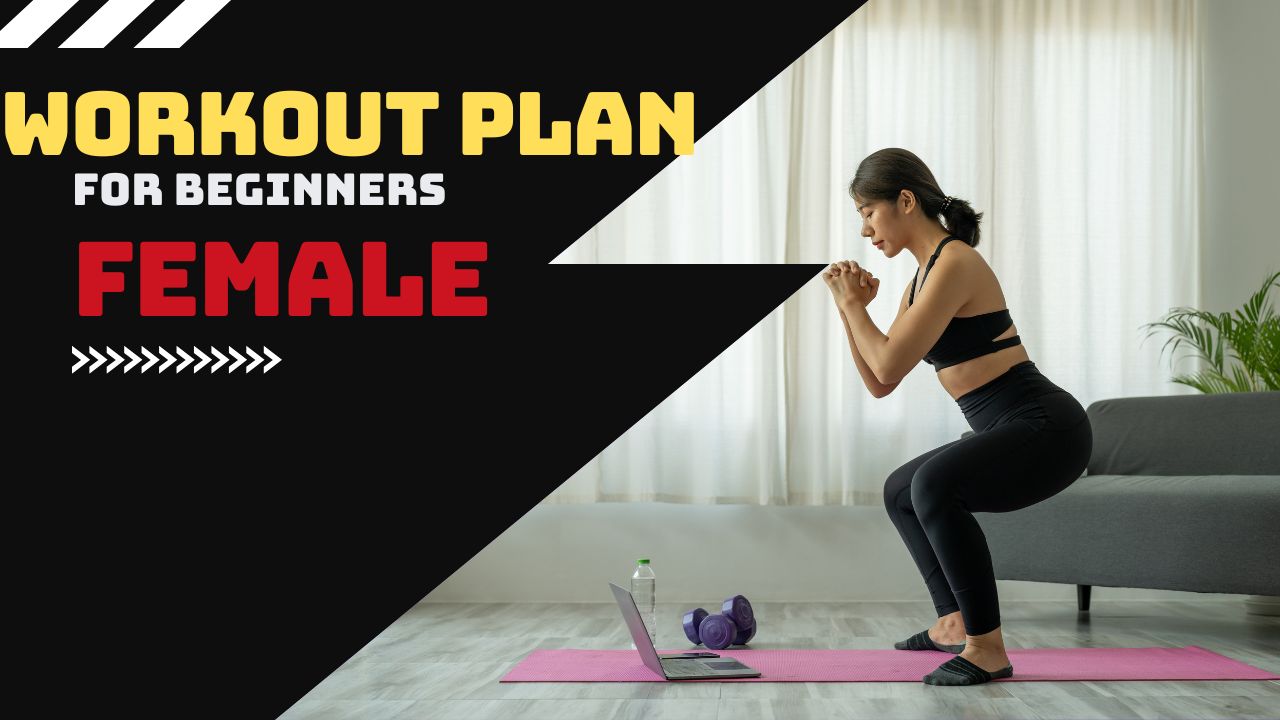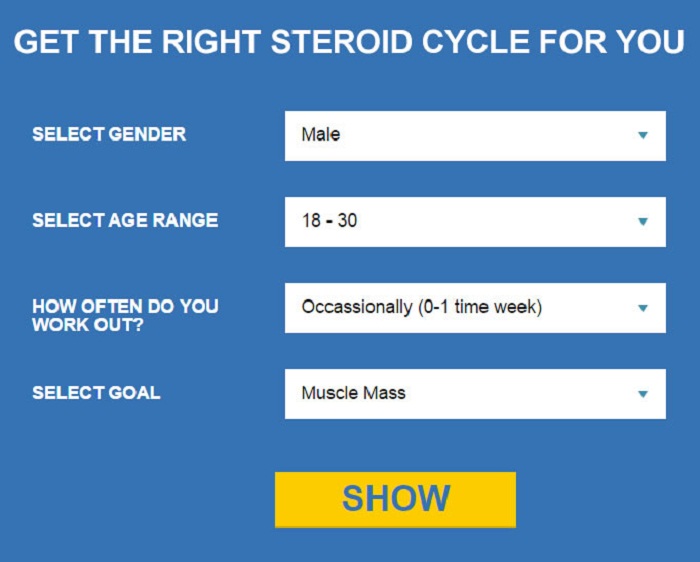Workout Plan for Beginners Female
Contents
- 1 Workout Plan for Beginners Female
- 2 Workout plan for Female beginners: Full 7-Day Schedule
- 3 Essential Exercises Explained:
- 4 1. Squats:
- 5 2. Leg Press:
- 6 3. Lunges:
- 7 4. Plank:
- 8 5. Bench Press:
- 9 6. Tricep Cable Pushdowns:
- 10 7. Crunches:
- 11 8. Leg Raises:
- 12 9. Overhead Press:
- 13 10. Seated Pectoral Fly:
- 14 Sample Workout Plan for Beginners:
- 15 Progression and Safety Tips:
- 16 Additional Tips for Beginners:
- 17 Conclusion: Unleashing Your Inner Athlete
- 18 FAQs on Beginner’s Workout Plan for Females:
- 19 References:
Welcome to the exciting world of fitness! Embarking on a workout routine can be both daunting and exhilarating. This guide is specifically designed for beginner females, providing a detailed breakdown of exercises, workout plans, and valuable tips to ensure a safe and effective journey towards your fitness goals.
This article dives into nine essential exercises along with a sample Workout Plan for Beginners Female to get you started. Remember, consistency is key! Here’s your roadmap to a stronger, healthier you.
Related Post: Female Bodybuilding | Best Diet Supplements
Workout plan for Female beginners: Full 7-Day Schedule
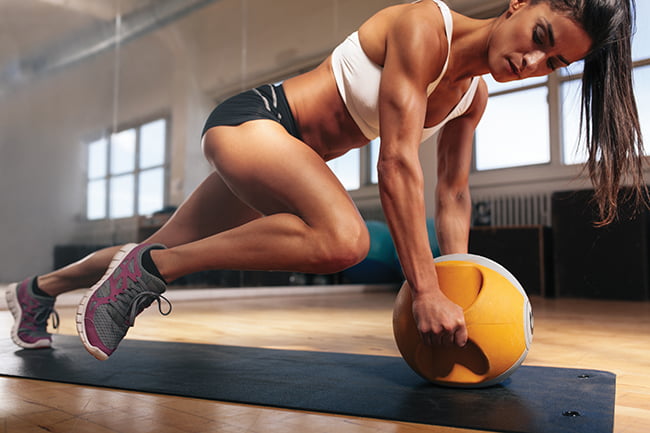
| Day | Focus | Exercises (Sets x Reps) | Modifications |
| Day 1 | Lower Body & Core | * Squats (3 x 10-12 reps) | * Perform modified plank on knees if the full plank is difficult. |
| * Lunges (3 x 10 reps per leg) | * Shorten stride length or perform walking lunges if needed. | ||
| * Glute Bridge (3 x 15-20 reps) | |||
| * Plank (3 x 30-60 sec hold) | * Light walking, yoga, or stretching | ||
| * Crunches (3 x 15-20 reps) | * Keep feet flat on the floor (or slightly bent knees) and avoid pulling on the neck. | ||
| Day 2 | Upper Body & Core | * Push-ups (modified or full) (3 x as many reps as possible with good form) | * Modifications: Perform on knees if full push-ups are challenging. |
| * Dumbbell Rows (3 x 10-12 reps per arm) | |||
| * Overhead Press (dumbbells) (3 x 10-12 reps) | * Start with lighter weights and focus on form. Perform seated overhead press for added stability if needed. | ||
| * Seated Pectoral Fly (dumbbells) (3 x 12-15 reps) | * Start with light weight and focus on controlled movements. | ||
| * Russian Twists (3 x 15 reps per side) | |||
| Day 3 | Active Rest & Recovery | * Keep feet flat on the floor (or slightly bent knees) and avoid pulling on neck. | |
| Day 4 | Full Body | * Jump Squats (3 x 10 reps) | |
| * Walking Lunges (3 x 30 seconds per leg) | |||
| * Side Plank (3 x 30 seconds per side) | |||
| * Dumbbell Romanian Deadlifts (3 x 10-12 reps) | |||
| * Crunches (3 x 15-20 reps) | * Keep feet flat on the floor (or slightly bent knees) and avoid pulling on the neck. | ||
| Day 5 | Cardio | * 30-45 minutes of cardio (swimming, biking, running, dancing, HIIT) | Choose an activity you enjoy. |
| Day 6 | Rest & Recovery | Allow your body time to recover. | |
| Day 7 (Optional) | Upper Body & Core | Repeat Day 2 exercises (optional) | – |
Key:
- Reps: Repetitions (number of times you perform an exercise)
- Sets: Number of times you repeat a group of repetitions (e.g., 3 sets of 10 squats means performing 10 squats 3 times)
Progression:
Gradually increase weight, repetitions, or sets as you get stronger. Prioritize proper form over heavier weights.
Additional Notes:
- This is a sample plan. Adjust weight, reps, and sets based on your fitness level.
- Listen to your body and take rest days when needed.
- Consult a doctor before starting a new workout routine if you have any pre-existing medical conditions.
- Combine this workout plan with a balanced diet for optimal results.
Essential Exercises Explained:
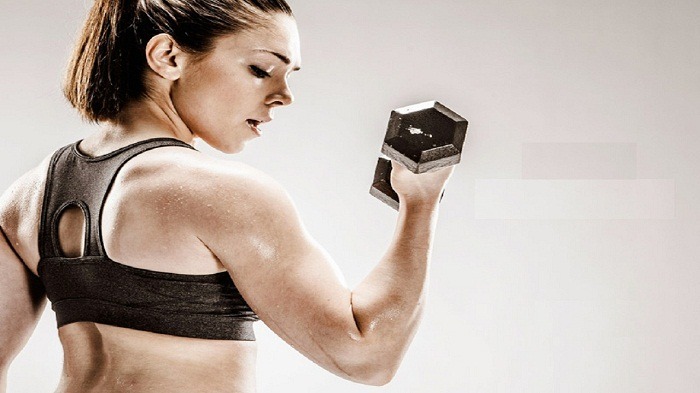
1. Squats:
The squat is a king (or queen!) among exercises. It works for multiple muscle groups, primarily targeting your quads (front of the thighs), glutes (buttocks), hamstrings (back of the thighs), and core. Here’s how to perform a proper squat:
- Stand with your feet shoulder-width apart, toes slightly pointing outwards.
- Engage your core by pulling your belly button towards your spine.
- Reach your hips back and down as if sitting in a chair, keeping your back straight and chest lifted.
- Lower yourself until your thighs are parallel to the ground (or as low as comfortable for beginners).
- Push through your heels to stand back up to the starting position.
Modifications:
- If squats are challenging, perform air squats without weights. You can also use a chair for support.
2. Leg Press:
The leg press is a machine exercise that targets your quads and glutes. It’s a fantastic option for beginners as it provides support for your back:
- Sit on the leg press machine and adjust the seat and backrest for proper form.
- Place your feet flat on the platform, shoulder-width apart.
- Unlock the safety catches and extend your legs, pushing the platform away with your heels.
- Lower the platform back down in a controlled manner, stopping just before your knees reach full extension.
Modifications:
- Start with a lightweight to get comfortable with the movement.
3. Lunges:
Lunges are a dynamic exercise that works your quads, glutes, hamstrings, and core. They improve balance and coordination:
- Stand with your feet hip-width apart.
- Take a big step forward with one leg, lowering your hips until both knees are bent at 90-degree angles.
- Your front knee should be directly over your ankle, and your back knee shouldn’t touch the ground.
- Push through your front heel to return to the starting position. Repeat with the other leg.
Modifications:
- Shorten your stride length if lunges feel awkward. You can also perform walking lunges for a continuous flow.
4. Plank:
The plank is a core exercise that strengthens your abdominal muscles, lower back, and shoulders. It improves overall posture and stability:
- Start in a push-up position with your forearms on the ground, and elbows directly under your shoulders.
- Keep your body in a straight line from head to heels, engaging your core by pulling your belly button towards your spine.
- Hold this position for as long as you can comfortably maintain good form.
Modifications:
- If a full plank is difficult, perform a modified plank on your knees.
5. Bench Press:
The bench press targets your chest muscles (pectorals), shoulders (triceps), and core:
- Lie on a flat bench with your feet flat on the floor.
- Grip the barbell slightly wider than shoulder-width apart, with your palms facing outwards.
- Unrack the barbell and lift it straight up to extend your arms. Lower the barbell back down to your chest in a controlled manner, keeping your elbows tucked in.
Modifications:
- Start with a lightweight to learn the proper form. You can also use dumbbells instead of a barbell for beginners.
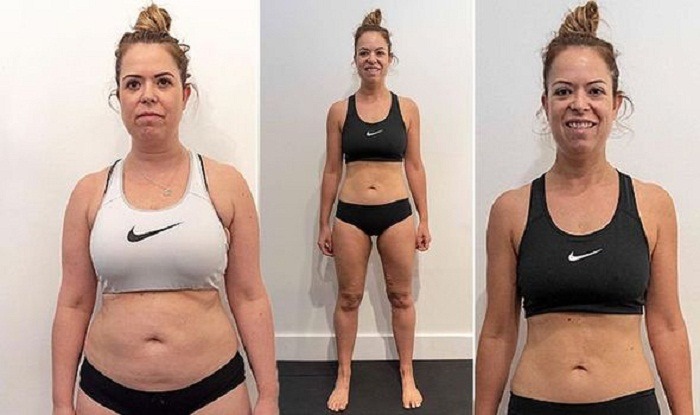
6. Tricep Cable Pushdowns:
Tricep cable pushdowns are an isolation exercise that focuses on your triceps, the muscles at the back of your upper arms:
- Attach a tricep handle to a cable machine.
- Grab the handle with palms facing downwards.
- Keep your upper arms close to your sides and extend your forearms to push the handle down until your arms are straight.
- Slowly return the handle to the starting position.
Modifications:
- Start with a lightweight and adjust as you get stronger.
7. Crunches:
Crunches are a classic core exercise that targets your abdominal muscles:
- Lie on your back with your knees bent and feet flat on the floor.
- Place your fingertips behind your ears, not pulling on your neck.
- Engage your core and lift your upper back off the ground, contracting your abdominal muscles.
- Slowly lower your back down to the starting position.
Modifications:
- Keep your feet flat (crunches). This engages your core muscles more effectively. If keeping your feet flat is uncomfortable, you can bend your knees slightly and place your feet hip-width apart. However, avoid pulling on your neck with your hands; keep them behind your ears for support.
8. Leg Raises:
Leg raises are another core exercise that targets your lower abs:
- Lie flat on your back with your legs extended straight up towards the ceiling.
- Keep your core engaged and slowly lower your legs down towards the ground, stopping just before they touch the floor.
- Lift your legs back up to the starting position in a controlled manner.
Modifications:
- If straight-leg raises are too difficult, bend your knees slightly throughout the movement.
9. Overhead Press:
The overhead press strengthens your shoulders (deltoids), triceps, and core:
- Stand with your feet shoulder-width apart and hold dumbbells directly above your shoulders, palms facing forward.
- Engage your core and press the dumbbells straight up overhead until your arms are fully extended.
- Lower the dumbbells back down to your shoulders in a controlled manner.
Modifications:
- Start with lighter weights and focus on proper form. You can also perform seated overhead presses for added stability.
10. Seated Pectoral Fly:
This exercise isolates your chest muscles:
- Sit on an adjustable bench with a dumbbell in each hand.
- Lean back slightly with your back straight and core engaged.
- Raise your arms out to the sides with a slight bend in your elbows, palms facing upwards.
- Squeeze your chest muscles at the top of the movement and then slowly return the dumbbells to the starting position.
Modifications:
- Start with a lightweight and focus on controlled movements.
Sample Workout Plan for Beginners:
This is a sample workout plan for beginners that incorporates the exercises mentioned above. It’s designed to be completed 2-3 times per week with at least one rest day in between. Remember, listen to your body and adjust the weight, repetitions, and sets based on your fitness level.
Warm-up (5-10 minutes):
- Light cardio (jumping jacks, jogging in place, jumping rope)
- Dynamic stretches (arm circles, leg swings, torso twists)
Workout:
Day 1: Lower Body & Core
- Squats: 3 sets of 10-12 repetitions
- Leg press: 3 sets of 10-12 repetitions
- Lunges: 3 sets of 10 repetitions per leg (or walking lunges for 30 seconds)
- Plank: 3 sets of 30-60 seconds hold
- Crunches: 3 sets of 15-20 repetitions
- Leg raises: 3 sets of 10-15 repetitions
Day 2: Upper Body & Core
- Bench press (dumbbells or barbell): 3 sets of 8-10 repetitions
- Tricep cable pushdowns: 3 sets of 12-15 repetitions
- Overhead press (dumbbells): 3 sets of 10-12 repetitions
- Seated pectoral fly (dumbbells): 3 sets of 12-15 repetitions
- Crunches: 3 sets of 15-20 repetitions
Cool-down (5-10 minutes):
- Static stretches (hold each stretch for 15-30 seconds)
Progression and Safety Tips:
As you get stronger, you can gradually increase the weight, repetitions, or sets in your workout plan. However, prioritize proper form over lifting heavier weights. Here are some safety tips to remember:
- Warm-up and cool-down: Always warm up before your workout and cool down afterward to prevent injury.
- Focus on form: Don’t sacrifice form for heavier weights.
- Listen to your body: Take rest days when needed and avoid pushing yourself to the point of pain.
- Consult a doctor: If you have any pre-existing medical conditions, consult your doctor before starting a new workout routine.
Additional Tips for Beginners:
- Find an exercise buddy: Having a workout partner can help you stay motivated and accountable.
- Make it fun! Choose exercises you enjoy to make your workouts more sustainable.
- Track your progress: Keep a workout journal to track your progress and stay motivated.
- Celebrate your achievements: Acknowledge your progress, big or small!
- Focus on healthy habits: Combine your workout routine with a balanced diet for optimal results.
By following this guide and incorporating these exercises into your routine, you’ll be well on your way to achieving your fitness goals. Remember, consistency is key! Embrace the journey, enjoy the process, and celebrate your strength as you progress.
Conclusion: Unleashing Your Inner Athlete
Congratulations on taking the first step towards a healthier and stronger you! This guide has equipped you with the knowledge and tools to embark on your fitness journey. Remember, this is a marathon, not a sprint. Embrace the process, celebrate your victories (big and small!), and most importantly, have fun!
Here’s a quick recap to keep you motivated:
- Consistency is Key: Regular workouts are vital for progress. Aim for 2-3 sessions per week, allowing for rest days.
- Listen to Your Body: Push yourself, but prioritize proper form over heavy weights. Rest when needed, and don’t hesitate to modify exercises for comfort and safety.
- Fuel Your Body: Combine your workout routine with a balanced diet for optimal results. Nourish your body with the nutrients it needs to thrive.
- Find Your Tribe: Having a workout partner or joining a fitness class can boost motivation and keep you accountable.
- Celebrate Every Milestone: Acknowledge your progress, no matter how small. Each workout completed and every accomplishment is a step towards your fitness goals.
Remember, fitness is a lifelong journey. With dedication and the right approach, you’ll unlock your inner athlete and achieve incredible things. So, lace up your sneakers, grab your dumbbells, and get ready to conquer your fitness dreams!
FAQs on Beginner’s Workout Plan for Females:
1. I’m a complete beginner. Can I still do this workout plan?
Absolutely! This plan is designed for beginners and incorporates modifications for various exercises. Start with lighter weights, focus on proper form, and gradually increase intensity as you get stronger.
2. How often should I work out?
Aim for 2-3 workouts per week with at least one rest day in between. This allows your body to recover and rebuild muscle.
3. What if I don’t have weights at home?
No problem! You can use bodyweight exercises for many exercises like squats, lunges, planks, and crunches. Use household items like water bottles or canned goods for added weight as you progress.
4. Do I need to warm up and cool down?
Yes! A proper warm-up prepares your body for exercise and reduces the risk of injury. A cool-down helps your body return to its resting state and improves flexibility.
5. Is it okay to modify the exercises?
Absolutely! It’s crucial to prioritize proper form over lifting heavier weights. Modify exercises to fit your current fitness level. This guide provides suggestions for modifications throughout the exercise explanations.
6. What should I eat to support my workouts?
Focus on a balanced diet that includes whole grains, lean protein, fruits, and vegetables. Eating a healthy diet provides your body with the nutrients it needs to build muscle and recover effectively.
7. How long should each workout session last?
For beginners, aim for 30-45 minutes per workout session, including warm-up, cool-down, and the exercises themselves. You can gradually increase the duration as your fitness improves.
8. I’m sore after my workout. Is that normal?
Mild soreness is a normal response to exercise, especially when starting a new routine. However, if you experience sharp pain, stop the exercise and consult a doctor.
9. When will I see the results?
It depends on various factors like your consistency, diet, and fitness level. However, with dedication and a balanced approach, you’ll start noticing improvements in strength, endurance, and overall well-being within a few weeks.
10. Should I consult a doctor before starting this workout plan?
If you have any pre-existing medical conditions, it’s always a good idea to consult your doctor before starting a new exercise program.
References:
- American Council on Exercise: https://www.acefitness.org/resources/everyone/exercise-library/experience/beginner/
- Mayo Clinic: https://www.mayoclinic.org/healthy-lifestyle/fitness/basics/fitness-basics/hlv-20049447
- Centers for Disease Control and Prevention: https://www.cdc.gov/physicalactivity/basics/adults/index.htm
